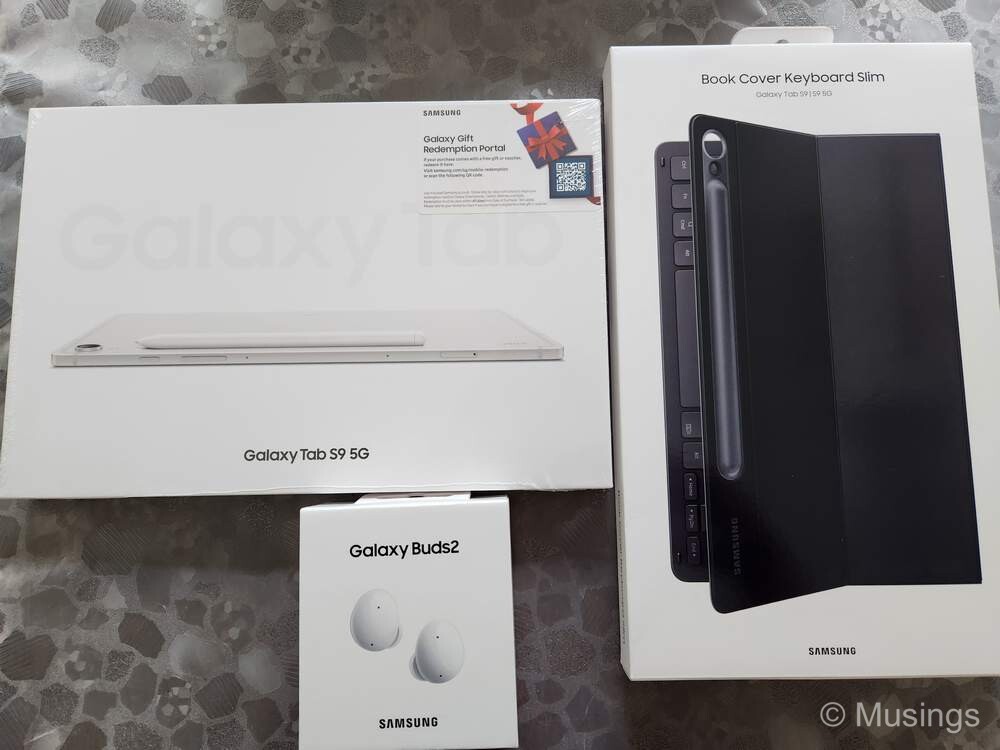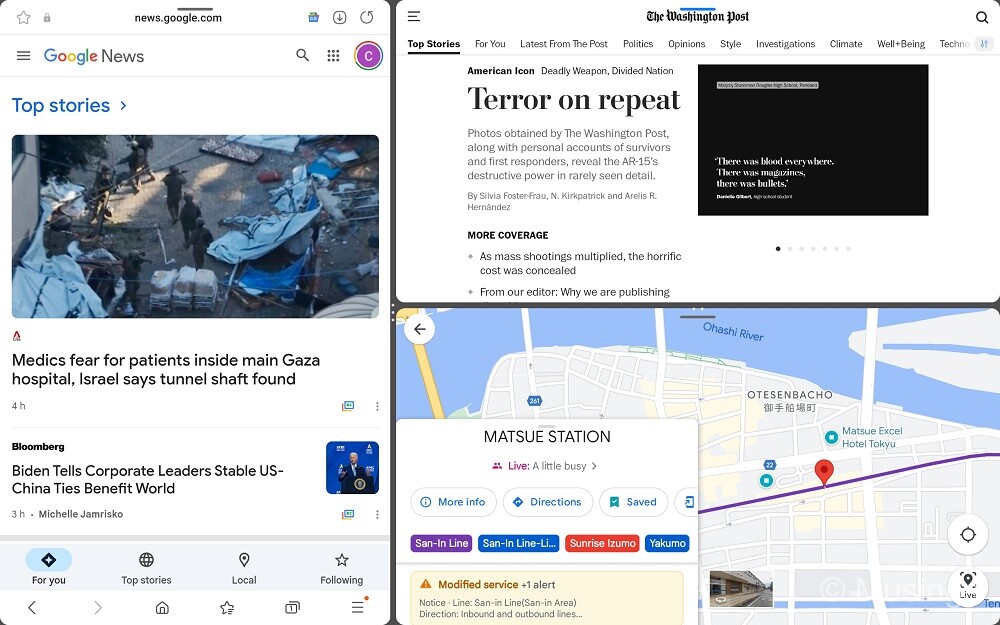One of the long running jokes we have at home is the missus’ string of bad luck when it comes to my birthday presents. She’s gotten me a number of tech toys over these many years, including smartwatches and tablets. But on more than a few occasions, I’ve ended up selling those items away after receiving them – often because it’s something that I don’t need because I already have something similar/almost as good/even better.
But the wife has persisted all these years. And for this year, while exploring what to get me, she stalked (haha) my blog entries here and read my post on the Xiaomi Mi Pad 6 that I bought in August. There was one bit in the post where I mused at that point: that the newly released Samsung Galaxy Tab S9 was top dog for Android tablets, but also pretty expensive and more than what I was willing to pay for what was going to be yet another tablet at home. We already had three iPads at home that we use regularly: the missus’ iPad Air 4, iPad Mini 6, and iPad Pro 12.9 (2020). Whether out of ideas or because the wife was convinced the S9 was at least something I had considered before going with the considerably cheaper Mi Pad 6, and she went ahead to get me the Tab S9 5G for my early birthday present.

And after several days of usage, my initial comments!
There is little contest between the Mi Pad 6 vs Tab S9. The latter is, simply put, superior on just about every count… excepting price, with the S9 costing more than twice that of the Mi Pad 6. The AMOLED display on the S9 offers richer blacks and contrasty colors, and higher maximum brightness levels. The build oozes quality, and the S9’s Snapdragon 8 Gen 2 processor provides a noticeably snappier all rounded performance to that of the Mi Pad 6. Interestingly, the Pad 6’s Snapdragon 870 processor isn’t too shabby, but switching between opened app windows back to the home screen invariably results in a few seconds of delay as the Pad 6 struggles to commit opened apps back to memory and load up the home screen again.
The Mi Pad 6 offers a technically higher maximum refresh rate of 144Hz, compared to the S9’s 120Hz. Oddly though, whenever I’m on multi-windows on the Pad 6, trying to get that smooth fluid scrolling on the browser is hard. It shows that slightest bit of hesitation and stuttering. I’ve not experienced such on the S9: scrolling pages on the browser is consistently fluid, whether I’m using multi-windows or not.
The S9 supports MicroSD card – hooray! It’s also IP68 rated. But no, I don’t intend to bring this tablet swimming, so the weather resistance rating doesn’t really mean that much to me.
I’m also pretty familiar with Samsung’s One UI overlay too, having spent more than a year now on the Z Fold 4. In fact, I’ve setup the S9’s home screen, taskbar and edge bars to mirror that of the Z Fold 4, and the UI consistency I get now really helps. The S9 also benefits from Samsung’s long experience on split screen support. I could not have more than two active app windows opened in split-screen on the Mi Pad 6, and each window can only be resized to predefined sizes: roughly one third of the tablet display, half-sized, and full-screen. The S9 permits fine adjustments to size and up to 3 app windows – similar to that on the Z Fold 4.

The S pen that comes with the S9 is a really nice bonus, compared to the fruit company which charges a small fortune for its own pen. I would have liked if there was some way to store the S pen inside the tablet, but that would have likely resulted in a smaller pen than the relatively full-sized one that comes with this S9.
Both tablets have the same amount of onboard RAM – 8GB. But perhaps because of MIUI’s aggressive memory management on the Mi Pad 6, there is a lot of frequent reloading of apps if I swipe away from them to look at something else, even momentarily. I’ve also observed this on the Z Fold 4, though to a somewhat lesser degree – and what’s particularly odd is that the Fold 4 comes with 12GB of RAM i.e. more than the S9. The S9 does a much better job keeping active apps in the memory even when I temporarily switch out of them, even with its 8GB RAM.
If there was one thing the Mi Pad 6 is superior in, it’s the slim folio keyboard that I bought with the Pad 6. The keys on the Pad 6 folio keyboard are larger. The row of number keys on the S9’s Book Cover Slim Keyboard is pretty small, and I’m trying hard to get used to using it! The Samsung Book Cover Slim Keyboard permits a sort of jiggle when the tablet is closed with the cover: it would be nice if it was a more snug fit.
In all, the Tab S9 is an improvement, user experience-wise, over the Mi Pad 6 – and the S9 is really that much better to use. But gosh – it’s an expensive upgrade! Still, this will now be the tablet I’d be bringing over to Japan for our holiday there next month to blog on the go. I just need to figure out what to do now with the Mi Pad 6: sell it or keep it as a spare LOL.